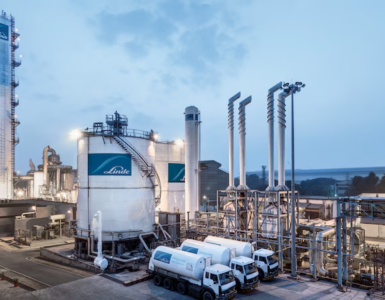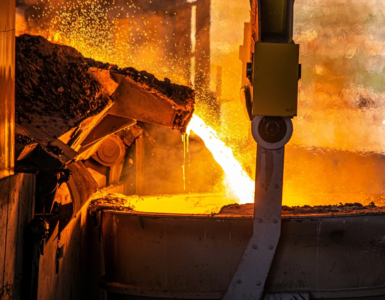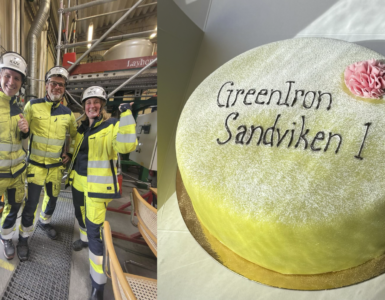Hydrogen Direct Reduced Iron (H-DRI) – Calix Zero Emission Steel Technology engineering study finds economical green iron solution.
The FEED study estimates that HBI production from low grade iron ore can be produced for a price of ~AUD$630-$800 / tonne iron using the ZESTY technology at demonstration scale. This value includes the capital cost of the plant and the processing cost. It does not include the cost of land or the cost of transport of the input and output materials.
The estimated cost of HBI production by ZESTY at demonstration scale is close to the range of existing conventional HBI processing costs. [1] This is despite the use of hydrogen as a reductant, and does not take credit for any carbon price, carbon border adjustment mechanism, or other green premium that a near zero emissions iron product may attract. A near zero emissions ZESTY HBI product would enable between 80 to near 100 per cent total reduction in carbon emissions from the final steel product, depending on the processing route used.[2]
ZESTY’s potential to achieve a cost of production close to the range of conventional HBI production even at small (demonstration) scale is a result of its minimal use of hydrogen, the relative simplicity and efficiency of the electrically heated process, and the elimination of the agglomeration and induration process steps. The total energy requirement of the process is projected to be 4.2-4.6MWh / tonne iron, including the requirements to produce hydrogen. The ZESTY plant’s energy requirement excluding hydrogen production was projected to be 0.9-1.3MWh / tonne iron.
🔥 What about we co-host a webinar? Let's educate, captivate, and convert the hydrogen economy!
Hydrogen Central is the global go-to online magazine for the hydrogen economy, we can help you host impactful webinars that become a global reference on your topic and are an evergreen source of leads. Click here to request more details
The overall capital and operating costs are expected to reduce further as the core technology is scaled and refined. The Calix ZESTY process takes advantage of a short residence time while utilising lightweight materials, resulting in a processing plant that is simple to construct and operate.
Compatible with intermittent and renewable sources of electricity, ZESTY may also be able to provide a versatile grid-load balancing service to the energy grid, due to the technology’s potential to match its energy use to the grid’s requirements across a wide range. Demand side load balancing – analogous and complementary to supply side energy storage – could support further renewable energy integration into the grid, lower grid balancing costs, and potentially enable more economical industrial energy use.
EXPANDED ORE TESTING RESULTS
The expanded ore testing program demonstrated metallisation degrees (conversion of iron ore to iron) of 70- 95% for a wide range of Australian goethite and hematite ores resulting in a product with an iron content of 66–85%. These results prove the technology can produce sufficient commercial grades at this scale, particularly for blast furnace / basic oxygen furnace (BF/BOF) steelmaking.
Further work is underway to upgrade the iron content of the final briquette and improve the suitability of the product for direct use in Electric Arc Furnaces (EAF), as well as evaluating other post H-DRI purification steps such as Electric Smelting Furnaces (ESF) being developed by the likes of BHP, Rio Tinto and BlueScope.
SUMMARY AND NEXT STEPS
The ZESTY H-DRI FEED study and ore testing plan has been highly successful. It has proven the technology at pilot scale and given considerable confidence that at demonstration scale, ZESTY HBI has the potential to be produced at economically attractive costs, even before the cost of carbon is taken into account.
Actual total CAPEX and the preferred site for the ZESTY HBI Demonstration facility remains commercial in confidence while final commercial and financing contracts are negotiated. A Financial Investment Decision on the Demonstration Plant is being progressed and is subject to these negotiations.
Study assumptions:
- Total cash cost of iron ore of $54 AUD/ tonne, based on average production prices
- Cost of electricity based on forecast spot market pricing, with an average cost of $36-48 AUD/MWh plus transmission and connection capital costs (included in the Capex analysis)
- Effective levelised cost of hydrogen of AUD$5.5-$6.2/kg H2 based on electrolyser CAPEX and electricity costs
- Conservative (high) operational costs and other overheads based on averaged numbers from existing similar scale plants.
READ the latest news shaping the hydrogen market at Hydrogen Central
Hydrogen Direct Reduced Iron (H-DRI) – Calix Zero Emission Steel Technology engineering study finds economical green iron solution. source








